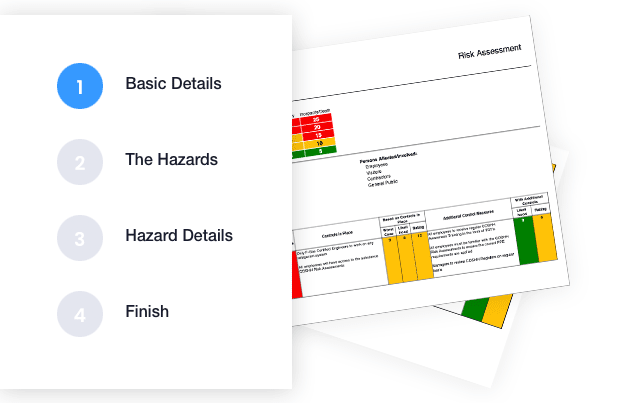Starting a new job can be a daunting task, even for seasoned environmental, health, and safety (EHS) professionals. When transitioning to a new company, it’s crucial to hit the ground running and ensure that the EHS program is operating effectively. However, there are common mistakes that EHS managers make when embarking on a new role. Here are the top five mistakes to avoid:
Mistake 1: Failing to understand the company culture
If you’re not familiar with the corporate culture, it can be easy to make assumptions about how things operate, which can cause misunderstandings and miscommunications. Understanding the nuances of your company’s culture is essential for EHS managers to build relationships and establish credibility within the organization.
It’s important to note that every company has its own unique culture, which is a combination of its history, values, beliefs, and practices. For example, some companies may have a more hierarchical culture, where decisions are made at the top and employees are expected to follow orders without question. Other companies may have a more collaborative culture, where employees are encouraged to share ideas and work together to solve problems.
Importance of company culture in EHS management
Many EHS decisions are influenced by company culture and values. For instance, if the company has a culture of risk-taking, EHS managers will need to work harder to promote safety and mitigate potential hazards. This may involve developing more robust safety protocols, providing additional training, and increasing communication with employees to ensure they understand the risks involved in their work.
On the other hand, if the company has a culture of caution and risk aversion, EHS managers may need to focus more on demonstrating the business case for safety initiatives. This may involve presenting data on the financial and reputational costs of accidents and injuries, as well as highlighting the benefits of a strong safety culture, such as increased productivity and employee morale.
Failure to recognize these cultural nuances can lead to ineffective EHS decision-making and inadequate risk management. EHS managers who take the time to understand and adapt to their company’s culture will be better equipped to develop effective EHS programs that align with the company’s goals and values.
Tips for adapting to a new company culture
- Get to know your colleagues and their work styles. Take the time to build relationships with your coworkers and learn about their backgrounds, experiences, and perspectives. This will help you understand how they approach their work and how you can best collaborate with them.
- Observe interactions between people and departments to understand the company’s communication patterns. Pay attention to how people communicate with each other, both formally and informally. This will give you insight into the company’s culture and help you identify any communication barriers that may exist.
- Understand the company’s values and mission statement to align the EHS program accordingly. Review the company’s mission statement and core values to understand what the organization stands for. Use this information to develop EHS programs that align with the company’s goals and values.
- Attend company events and participate in company activities. Participating in company events and activities can help you get a better sense of the company’s culture and values. It also provides an opportunity to network with colleagues and build relationships.
- Be open-minded and flexible. Remember that every company has its own unique culture, and it may take time to adjust to a new environment. Be open-minded and flexible, and be willing to adapt your approach as needed to fit in with the company’s culture.
By following these tips, EHS managers can better understand their company’s culture and develop effective EHS programs that align with the organization’s goals and values. This will help promote a strong safety culture and mitigate potential hazards, ultimately leading to a safer and healthier workplace for all employees.
Mistake 2: Not conducting a thorough risk assessment
When EHS managers start a new job, they should conduct a comprehensive risk assessment, but failing to do so can lead to serious workplace accidents and injuries. Risk assessments allow EHS managers to identify potential hazards and develop strategies to mitigate them.
The role of risk assessments in EHS management
Risk assessments are the foundation of EHS management and are essential for developing policies and procedures to protect employees, the environment, and the community at large. They help EHS managers to prioritize risks and allocate resources more effectively.
Steps for conducting a comprehensive risk assessment
- Identify potential hazards, including physical, chemical, and biological agents.
- Assess the likelihood and severity of each identified hazard.
- Develop and implement strategies for controlling or eliminating the identified hazards.
- Communicate with employees and stakeholders about the identified risks and the strategies in place to mitigate them.
Risk Assessments Made Easy With Evalu-8 EHS
Designed to help you effortlessly create comprehensive risk assessments in just a few clicks. Say goodbye to time-consuming manual processes. With real-time insights, customisable templates, and seamless collaboration features.

Mistake 3: Neglecting to build relationships with key stakeholders
EHS managers must work cross-functionally with other departments and key stakeholders to effectively manage risks and implement EHS initiatives. Failing to build relationships with these stakeholders can impede progress and lead to missed opportunities.
Identifying key stakeholders in EHS management
EHS managers need to work with people on all levels of the organization to ensure that EHS initiatives and policies are successful. These stakeholders may include line managers, safety personnel, employees, customers, suppliers, and regulators.
Strategies for building strong relationships with stakeholders
- Communicate effectively and consistently.
- Show stakeholders the value of EHS initiatives and prioritize their concerns.
Showcasing the successes of EHS initiatives and engaging stakeholders in their deployment can be beneficial in garnering support.
Mistake 4: Overlooking the importance of employee training and engagement
Involvement and engagement from employees are critical for implementing effective EHS strategies. Employee training programs can also help to strengthen the safety culture of the company and minimize risk.
The role of training in EHS management
Training is essential for ensuring that employees understand their roles and responsibilities regarding safety and environmental preservation. It also empowers employees to identify and report unsafe practices or hazards, and to take corrective action in the field.
Best practices for engaging employees in EHS initiatives
- Incentivise and recognize safety achievements.
- Involve employees in developing EHS initiatives.
- Hold regular safety meetings and ensure that employee feedback is considered.
Training Management With Evalu-8 EHS
Evalu-8 EHS Health and Safety Training feature empowers your team to enhance workplace safety with comprehensive training managment solutions. Streamline your training process, reduce risk, and ensure compliance with ease.

Mistake 5: Failing to establish clear communication channels
Effective communication is crucial in EHS management, but managers often overlook the steps necessary to communicate effectively. Poor communication can lead to confused employees, misinterpretation of policies and procedures, and ultimately unsafe working conditions.
The importance of communication in EHS management
Communication facilitates crucial decision-making between EHS managers and stakeholders. These individuals must be fully informed about any EHS developments and benefits to the company from its implementation.
Tips for setting up effective communication channels
- Develop a formal communication plan, outlining the frequency of communications, and stakeholders involved.
- Establish a two-way communication strategy for receiving feedback and responding to it.
- Use various communication mediums such as email, intranet, bulletin boards, safety meetings, etc.
Conclusion
Starting a new EHS role can be challenging, but knowing the most common mistakes to avoid can significantly reduce the risk of failure. By focusing on these five critical areas, EHS managers can successfully navigate transitions at their new companies, and establish effective EHS practices that ensure the wellbeing of employees and protection of the environment.
See Evalu-8 EHS in action
The leading choice of EHS software for small to large companies in the manufacturing sector that want to get control of there safety




